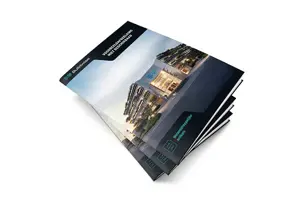In the context of sustainable construction, green roofs are considered as being a possibility for improving the water balance in urbanized areas, i.e. by reducing the amount of rainwater discharged within the sewer. Especially in cases where cities have flooding problems in the lower parts of the sewer system during storm showers, green roofs are considered as one of the possible solutions for tempering the problem and in some cases their use is even imposed by regulations. However, it is known that their tempering effect is to a great extend depending on their composition. An objective indication on this performance is needed in order to guarantee an appropriate contribution to the aimed objectives. This paper describes a methodology for measuring the attenuation effect of green roofs in laboratory conditions. It also presents the results obtained when applying the method on a given green roof, showing its consistence. The paper also indicates the need for further research in order to correlate the methodology to actual performances.
